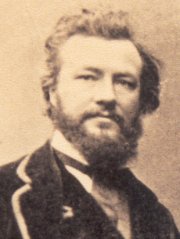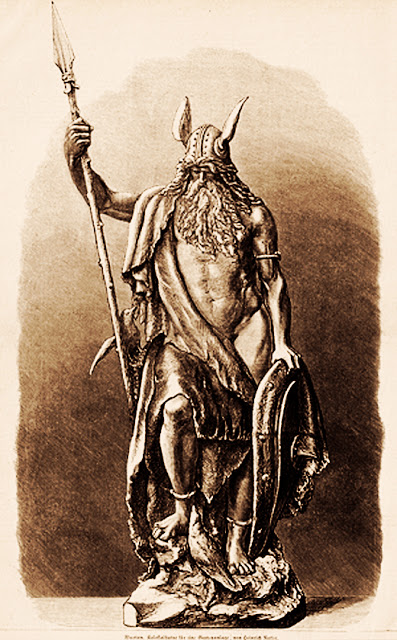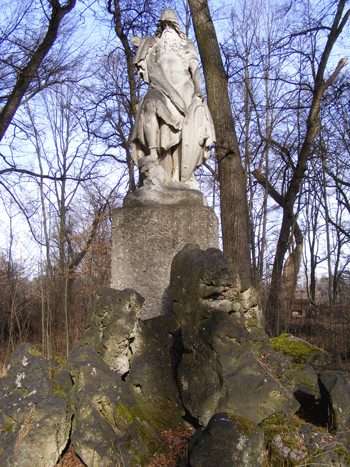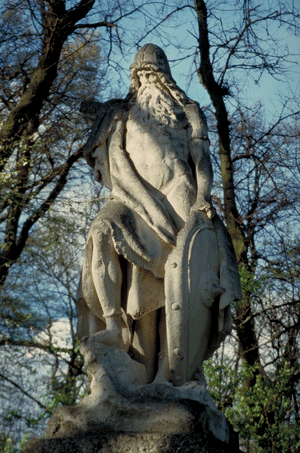|
|
| |
|
|
 Behind the Bogenhausen Clinic
complex (established 1983), a statue of Wotan
(Odin) sculpted from Kelheim marble stands on a
pedestal. Eroded by wind and weather, the
Germanic god of war has lost his right arm and spear
over the decades since it was commissioned by the
painter Anton Höchl for his estate—
the property of his father, the mayor of Vienna —the
Villa "Am Priel". To the east of the
mansion, in a grove of beech and lime trees, Wotan
stands on a pedestal
of towering rock fragments. Behind the Bogenhausen Clinic
complex (established 1983), a statue of Wotan
(Odin) sculpted from Kelheim marble stands on a
pedestal. Eroded by wind and weather, the
Germanic god of war has lost his right arm and spear
over the decades since it was commissioned by the
painter Anton Höchl for his estate—
the property of his father, the mayor of Vienna —the
Villa "Am Priel". To the east of the
mansion, in a grove of beech and lime trees, Wotan
stands on a pedestal
of towering rock fragments.
Anton Höchl was a friend of the sculptor, Heinrich
Natter, a native of Tyrol. He was a student of J. Geyer
in Augsburg and Matthias Widmann in Munich. On
July 25, 1871, Höchl wrote in his diary (now in the City
Archive, Munich): "Today I gave the sculptor Natter the
commission for the artistic design and execution of a
colossal statue of Wotan in Kelheimer limestone, 9 feet
high." In January, 1873, the figure was made public in
the artist's Munich studio. The work was sent to Vienna
on April 15, 1873 for public exhibition until the
beginning of February, 1874. At the end of March
Höchl had the foundations laid out in the grove, and on
June 5, 1874, the figure installed. A gypsum model of
the Siegfried legend by the same artist in 1876
decorated the garden in front. Unfortunately, time has
not been kind to the Kelheim marble.
|

Concept Drawing
Heinrich Natter,
an Austrian sculptor,
born March 16, 1844 in South Tyrol; died April 13, 1892
in Vienna. After the demolition of the Real Gymnasium in
Innsbruck, young Natter became a sculptor's apprentice
under Franz Xaver Pendl in Meran
from 1858 to 1863. He then attended the Polytechnic
School in Augsburg and studied from 1864 to 1867 at the Academy
of Fine Arts in Munich under Max von Widnmann. After an extended
trip to Italy with stays in Rome and Florence, he returned to
Munich in 1868, where he first had success with portrait busts.
Natter received his first monument commission, a stele for
Robert Schumann in Leipzig,
in 1872. In 1875 he erected a monument to Walther von
der Vogelweide for Bolzano. In 1876 he moved to Vienna, where he
first had difficulty gaining a foothold despite several
assignments. In Vienna he frequented liberal publicists and
writers, especially Ludwig Speidel, as well as conservative
poets like Richard von Kralik. In his final years, he also
became a writer.
 |
 |
| |
|
|
|
|



